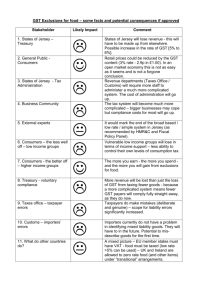21+ Glyphosate Agapanthus Plants
The Agapanthus commonly referred to as the Lily-of-the-Nile or the African lily plant is an herbaceous perennial from the Amaryllidaceae family that is hardy in USDA Zones 7 to 11. Agapanthus is a tenacious plant.

Mulder S Chart Illustrating Nutrient Dynamics A Useful Tool For The Landscape And Garden Designer Compost Tea Hydroponics Agriculture
A non-blooming agapanthus plant may need fertilizer but not too much.

21+ glyphosate agapanthus plants. Most gardeners report that their agapanthus plants are rarely eaten. It produces rich-green strappy foliage and blooms bluish-colored. May remain evergreen in milder winter climates.
The Agapanthus praecox also belongs to that numerous category of plants that have not only ornamental but also great therapeutic and ethnobotanical value. A new cultivar of Agapanthus AMDB002 that is characterized by a vigorous growth habit a medium plant size inflorescences that form dense umbels of flowers violet-blue outer tepal color violet-blue and white striping of the inner tepal an extended flowering season with blooming and re-blooming from early spring to late summer and sporadically in early fall a very floriferous. It can grow a new plant from a sliver of its fleshy underground stem called a rhizome and those purple flowers it.
The name is derived from Greek. The dosage is calculated based on the amount of active ingredient glyphosate in the product. Glyphosate is the only herbicide approved as a dip treatment for the devitalisation of cut flowers and foliage for import to Australia.
Known as the African lily the agapanthus is a vigorously-growing herbaceous perennial that can be both evergreen and deciduous. There are inky blues pale sapphires purples and whites. Agapanthus look great when planted with drifts of ornamental grasses sun-loving rudbeckias and goldenrod Solidago.
Some species of Agapanthus are commonly known as lily of the Nile or African lily in the UK. This South African native beauty displays large masses of striking blue or white flowers atop a tall and slender stalk. Agapanthus Agapanthus praecox is a weed when it spreads into the wild from gardens.
Agapanthus plants arent true lilies and dont share their high level of toxicity. This approach is ideal for large amounts of Agapanthus that a gardener wants to kill quickly and with little physical labor. However ingestion of the rhizomes and roots can cause minor illness that can escalate depending on the amount ingested.
Spray the Agapanthus with glyphosate. The family is in the monocot order Asparagales. All sizes can be grown in containers.
Glyphosate is broken down by soil microorganisms fairly quickly under certain favourable conditions or very slowly under less favourable conditions and some plants can metabolize glyphosate to break it down but when this happens the major glyphosate metabolite breakdown product is aminomethylphosphonic acid AMPA which is a recognized phytotoxin plant poison and AMPA together with glyphosate could modify the effects on plants compared to glyphosate. 11 mgkg AMPA 19 TRR. It is easy to grow and hardy but this also makes it weedy in the wild.
These South African perennial plants are equally suitable for borders and large containers. Agapanthus ˌæɡəˈpænθəs is the only genus in the subfamily Agapanthoideae of the flowering plant family Amaryllidaceae. While others can grow up to 15 m 5ft.
Glyphosate representing 93 TRR in foliage and 80 TRR in immature pods with seeds. The systemic chemical gets absorbed through the plants foliage and kills the entire plant system. Agapanthus are known for their large blue drumstick-headed flowers in summer.
It was introduced because of its attractive clumps of long leathery green leaves and purple blue or white stalked flowers. Table 1Glyphosate dosage and dipping requirements for cut flowers. The residue in seeds at harvest seven days after the final application comprised glyphosate 21 TRR.
Stop fertilizing when the plant stops blooming usually in early autumn. Bloom time is variable depending on the local climate and water availability but this plant usually blooms from mid to late summer. Any glyphosate product can be used.
Flower colour is key. A look-see trial was conducted during 19971998 to ascertain the effects of glyphosate a post-emergence herbicide on four types of flowering bulbous plants viz. However they are not lilies and all of the species are native to Southern Africa though some.
Most agapanthus are hardy and their leaves die down in winter. Agapanthus range in height some are quite small 20-60cm 8in-2ft. Try feeding the plant twice monthly during springtime using a water-soluble fertilizer for blooming plants and then cut back to once monthly when the plant begins to bloom.
Use the shorter ones at the front of the border taller ones to the middle of the border. Gladiolus Gladiolus spp Dutch amaryllis Hippeastrum hybridum agapanthus Agapanthus. This dwarf Agapanthus is very suitable for perennial borders or container planting on the balcony terrace or patio.
The flower stems of a standard Agapanthus can grow up to 6 feet tall but dwarf types only grow up to 20 inches. 004 mgkg and N-acetyl-AMPA 15 TRR. 045 mgkg N-acetyl-glyphosate 51 TRR.
For the ethnobotanical use of Agapanthus which is of great interest as it is attributed to it magic properties we promise again with the well-known inconsistency that distinguishes us a special tribute.

Budget Manual Financial

Ruffly Rose Bush Spring Roses Beautiful Flowers Perfect Garden

Agapanthus Seed Propagation Tips For Planting Agapanthus Seeds Agapanthus Seed Pods Propagation

Budget Manual Financial

Diy Dividing Agapanthus Agapanthus Agapanthus Praecox Easy Plants To Grow

Amazon Best Puritan S Pride Beta Carotene Provitamin A In Usa Import Ragi Benefits Gandum

View Picture Of Sundrops Texas Primrose Berlandier S Sundrops Calylophus Berlandieri At Dave S Garden All Pi Ornamental Grasses Landscaping Plants Garden

Budget Manual Financial